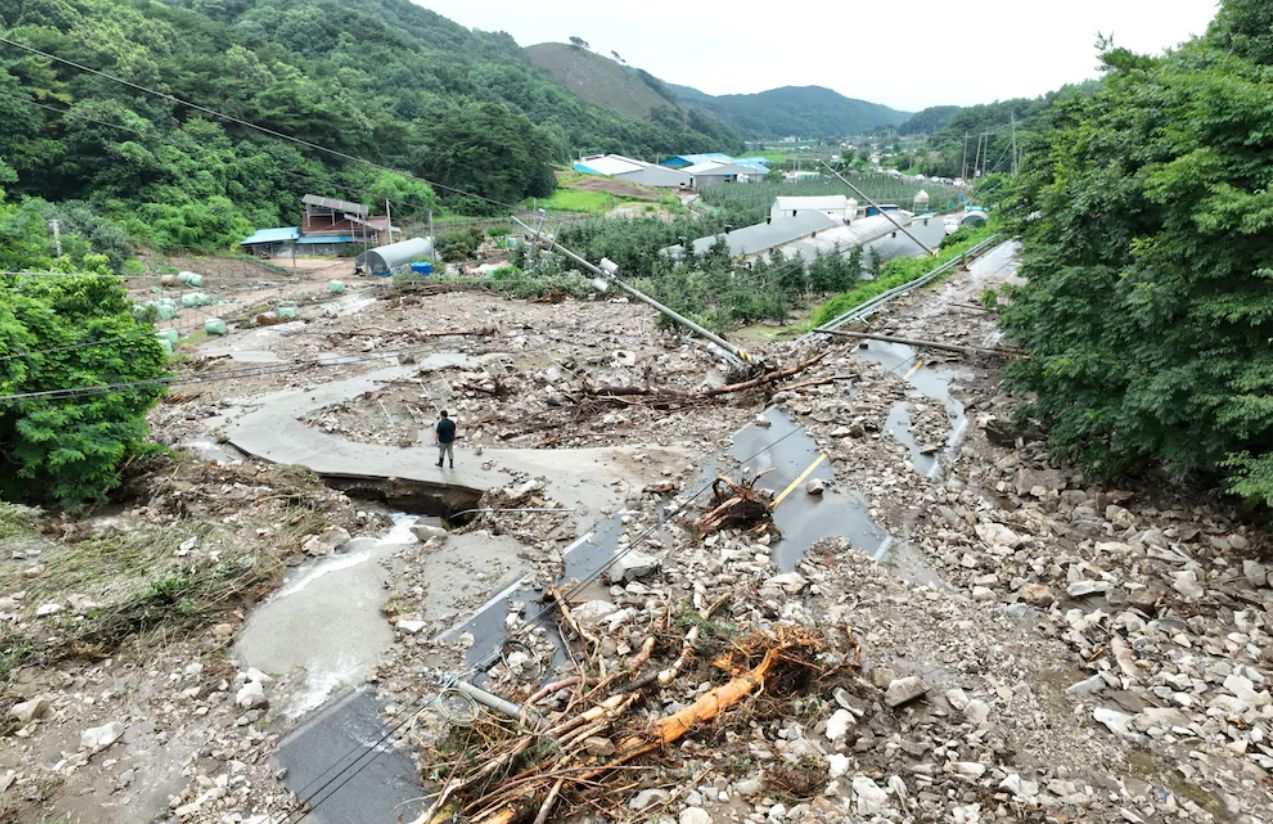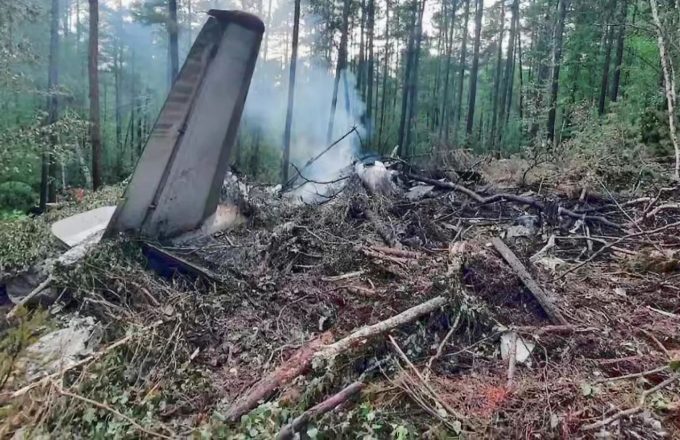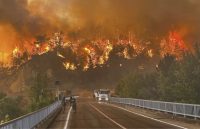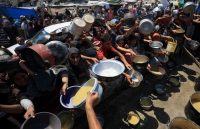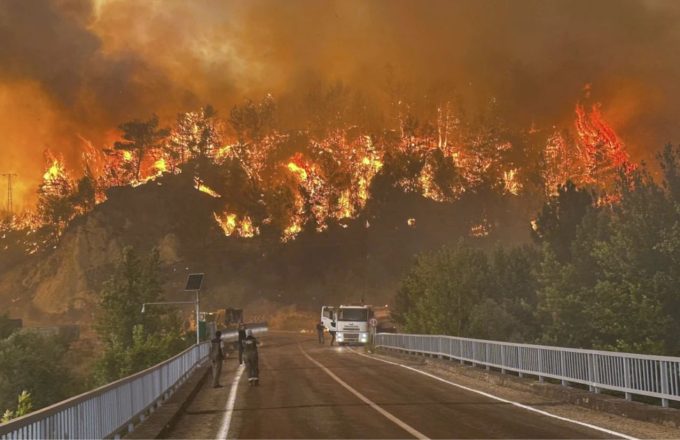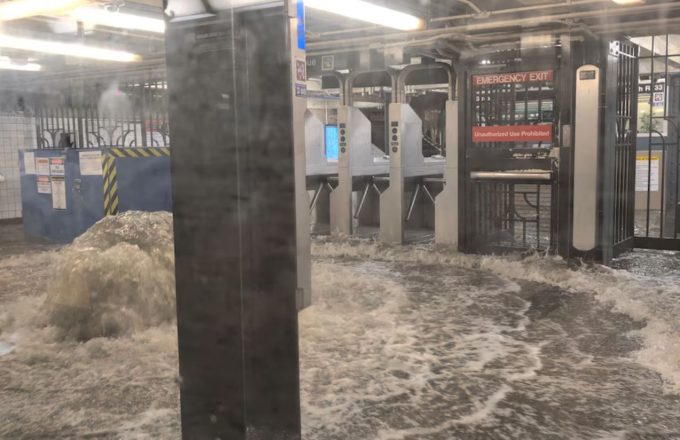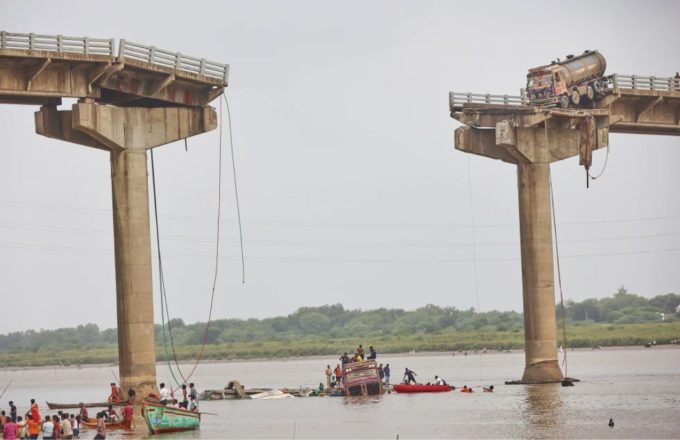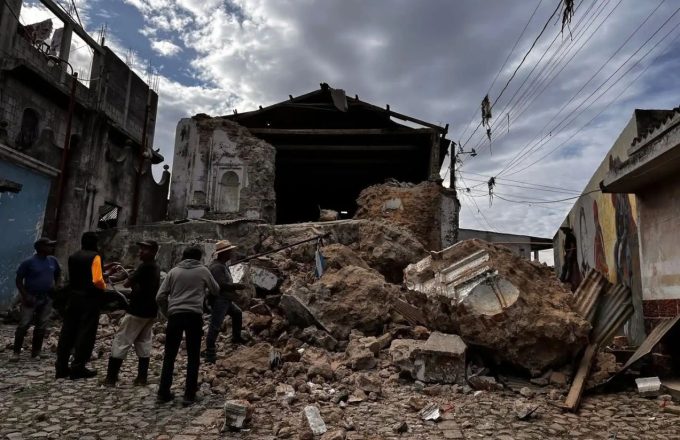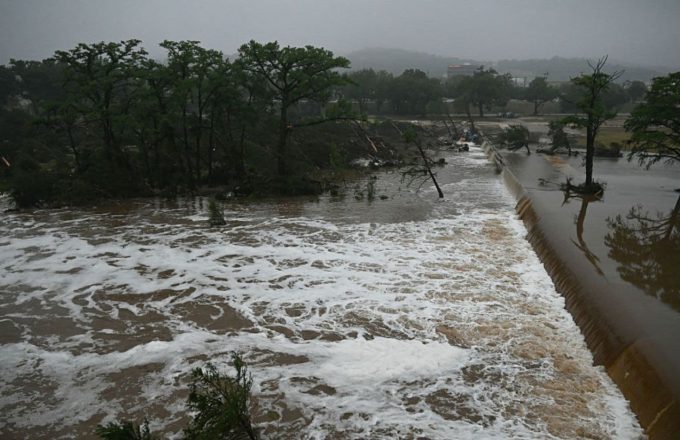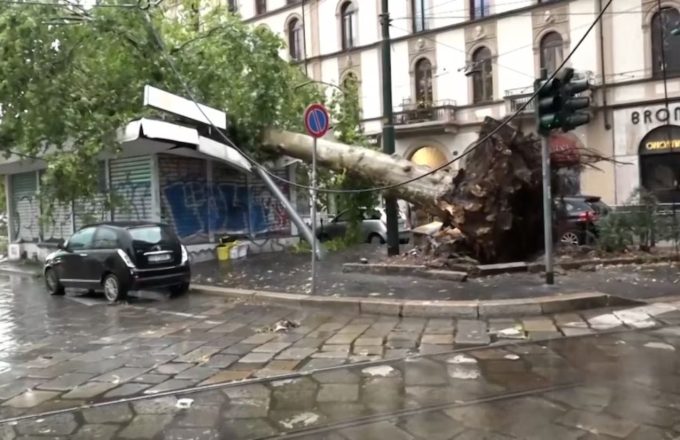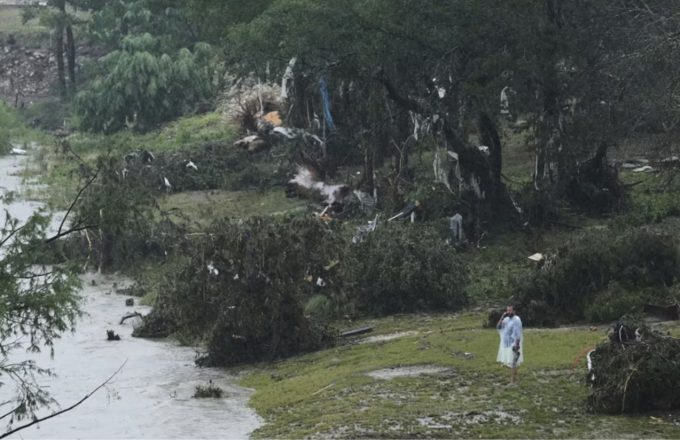Torrential rains that began intensifying on Wednesday have triggered a national emergency in South Korea, with the southern province of Chungcheong, located about 100 kilometers south of Seoul, being particularly hard hit. Conditions became critical in the coastal city of Seosan, where rainfall reached 114.9 millimeters per hour—the highest level since records began in 1904, according to the Korea Meteorological Administration, as reported by AFP.
In less than 24 hours, Seosan recorded over 400 millimeters of rainfall, leading to river overflows, flooded roads and railways, and dozens of submerged vehicles. The intensity of the rainfall—something experts say occurs only once every 100 years—has overwhelmed infrastructure and mobilized emergency response teams.
Authorities have so far confirmed at least three deaths. One of the victims, a driver, was killed in Osan, about 50 kilometers from the capital, when a 10-meter-high wall collapsed onto the road and crushed his vehicle. The other two victims were elderly men: one was swept away by floodwaters, while the other was found dead in a flooded apartment in Seosan.
More than 1,000 people have been evacuated as a precaution, according to the Ministry of the Interior. In Seosan and Buyeo, at least two people were injured. In Seoul and surrounding areas, swollen streams and fallen trees forced road closures and precautionary evacuations.
The Han River Flood Control Office issued a flood warning for the Dorim Stream at the Sindebang 1 Bridge, located in the Sillim neighborhood of Seoul’s southern Gwanak district.
In addition to widespread flooding, landslides have been reported in various areas across both South and North Chungcheong provinces. Authorities fear that if the rain continues as forecast, the risk of further natural disasters will increase.
The national meteorological agency has warned that the downpours will persist through Friday, with the southern regions expected to be hit hardest. Up to 300 millimeters of additional rainfall is forecast in mountainous and coastal areas, potentially extending the emergency into Saturday.
Although July is typically monsoon season in South Korea, the volume of rain seen this week has far exceeded historical averages. “Three areas in the province experienced record-breaking rainfall over just a few days,” a meteorological official said.
Authorities have urged the public to remain on high alert and follow safety recommendations as the threat of flash floods and landslides continues. Meanwhile, rescue teams are working around the clock to assist those affected and prevent further tragedies.


